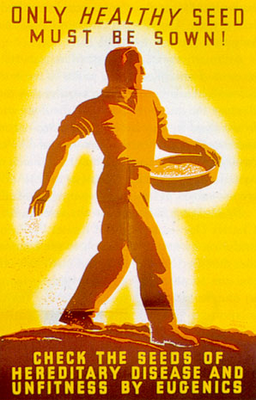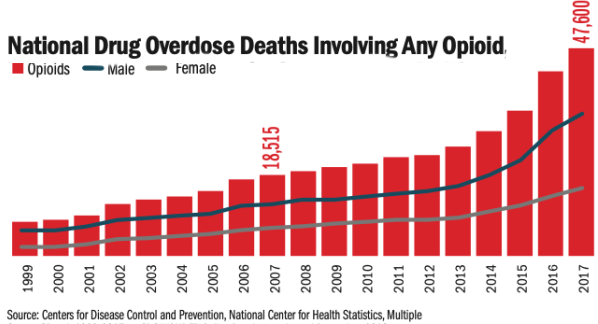Book Review - Pandora’s Lab: Seven Stories of Science Gone Wrong
October 12 2020
This fascinating book by Dr. Paul Offit illustrates a collection of inventions that according to him had the most impact on the world. Or more aptly, a collection of ‘mistakes’ we made in the past. Dr. Offit is a pediatrician, co-inventor of Rotavirus vaccine, and a prolific science writer.
I am familiar with most of these mistakes (check my article on it here), but there were three (out of seven) that I was least aware of and struck me the most. So here is a synopsis of the 3 chapters:
1. ‘Betterment’ of humans
One of the noblest of goals, but turned out to be the darkest moment in American history- The American Eugenics movement.
Eugenics or “Born well” movement was based on the horrible science that poverty, crime immorality, low intelligence, alcoholism, prostitution, and other mental and social problems are ‘hereditary’. And the best way to make a better nation or human race is to prevent the breeding of these people. The idea originated from Mendel’s pea plant experiments and the selective breeding of animals. Little did they know that humans and animals are incredibly complex than pea plants.

Apparently, bolstered by the bad science, eugenics movement made it to the curriculum in over 350 universities, including the Harvard. Even the immigration ban in US (1920 - 1965) was motivated by the eugenics movement to restrict the “feeble-minded, idiots, mentally or physically impaired or the unfit or the inferiors”. Asians were completely banned and southern and European immigrants were restricted. IQ tests were designed to weed out the “morons” or the “feeble-minded” - people with low intelligence. Almost 60,00 were forcefully sterilized (removal of sex organs) and sterilization was ‘legalized’ in almost 27 states across America. The worst came when the highest court in the US, the Supreme court, passed with a unanimous majority of 8:1 to legalize sterilization. The judge infamously said, “three generations of imbeciles are enough” Unbeknownst to many, the roots of the Nazi’s eugenics movement originated from the US. Nazi’s, however, took it a notch further; from sterilization to extermination.
Science was used as a pawn to further a political or cultural agenda. The eugenics movement is not just a blemish on American history, but human species as a whole.
2. The Opioid epidemic in US
The chapter traces the history of opioid use, and how we ended in this terrible state of affairs. In America, over 130 people die a day from opioid-related and opioid overdose. In 2018, around 48,000 people died from opioids.
Opioids are safe when used in short term for pain relief, but they are highly addictive and end up being misused. Morphine and heroin are extracted from the opium poppy plant. And later on came the powerful synthetic or man-made derivates (Oxycodeine, Fentadone, or methadone - 1000 times more powerful than morphine). USA prescribes 80% of the world’s opiates.
Russel Portenoy’s, one of the leading pain experts in the 70s, seminal paper with just 38 cases claimed that opioids are not addictive and could be used in non-cancer chronic pain patients. Within no time, pharmaceutical companies (mainly Purdue Pharma) aggressively marketed opioids as safe and ‘non-addictive’, and doctors started prescribing these in large numbers. Worse, they even had it going that addiction was not because of the drug, but your ‘personal’ failing.

The bottom line is that the data for the safety of opiates was very weak. But data don’t make decisions. I personally think it shows failure at every level: Pharma companies share a major blame for their lies, but also the FDA for approving it for long-term use without vetting the data. And maybe a small part by physicians for blindly prescribing these.
Clearly, one of the worst medical mistakes of modern medicine.
3. The fall of the greatest chemical
Malaria: One of the deadliest diseases in human history. Each year more than 500 million people are affected and more than a million die every year, mostly children. 60% of malaria cases occurring among the poorest 20% of the world’s population.
Now comes DDT- the star chemical that is highly effective against malaria. Besides the effectiveness against malaria, DDT also reduced other fevers like Dengue and yellow fever. It is often said that DDT probably saved more people (in millions) than any other chemical ever known to man.
Then came the groundbreaking, best-seller book “Silent Spring” of 1962 by Rachel Carson, a marine biologist turned nature writer, who helped start the modern environmentalist movement. Unfortunately, her book was loaded on anecdotes and less on science. For example, she based on a retired bank watcher’s anecdote to show eagles were dying because of DDT! Largely inspired by the book and the public uproar that followed, DDT was banned in 1972, and more than 30 nations followed. And malaria came roaring back.

In 2006, the WHO, realizing its mistake, reversed its decision on DDT. Studies show that DDT didn’t cause liver disease, premature deaths, or leukemia as claimed. Extensive research has since shown that well-managed indoor residual spraying programs using DDT pose little harm to wildlife or to humans.
Carson’s basic premise that man-made activities are destroying the environment is correct and should be applauded. Unfortunately, she was wrong about DDT. And a few would argue that her claims against DDT might have lead to the death of thousands, maybe millions.
Conclusion
I love these stories; these stories, as tragic as they are, are a powerful reminder of why we should rely on evidence when claims are casually thrown around, and why we should rigorously evaluate the evidence behind these claims.
Thank you for reading.





